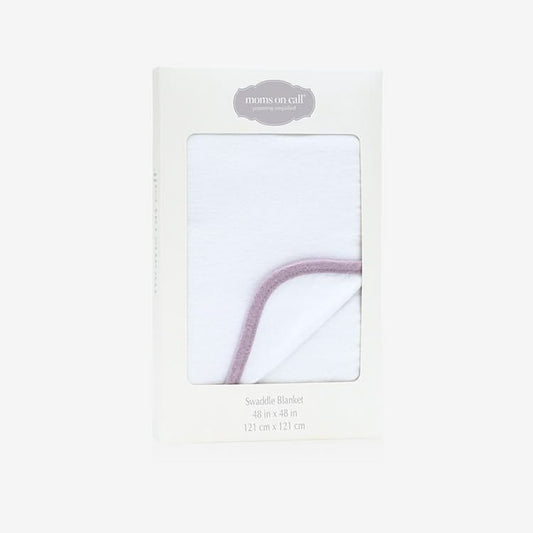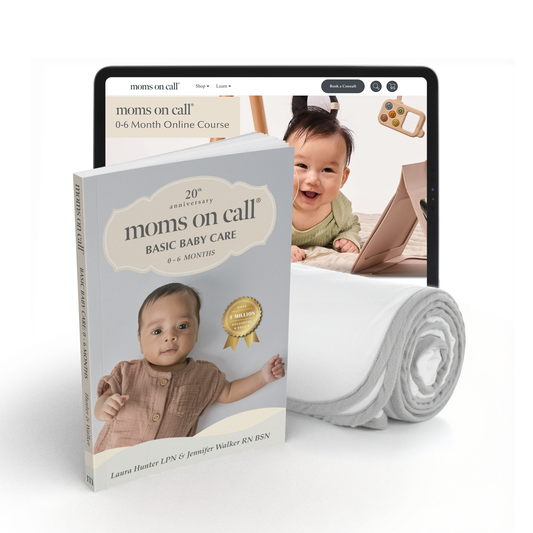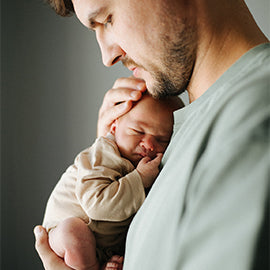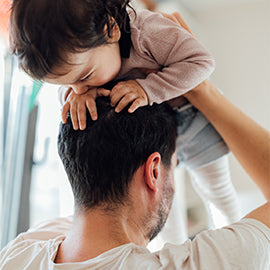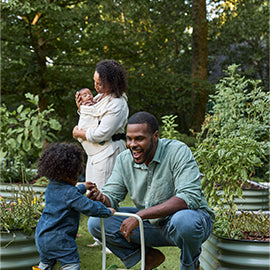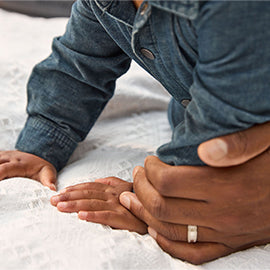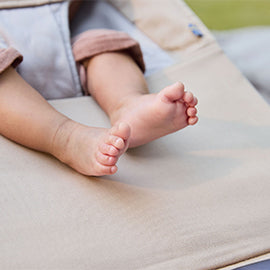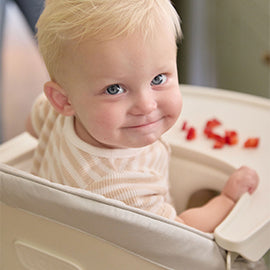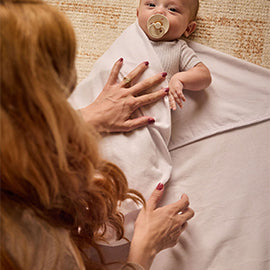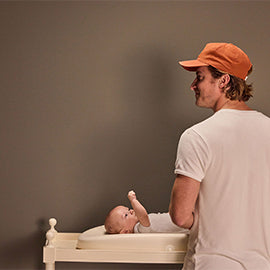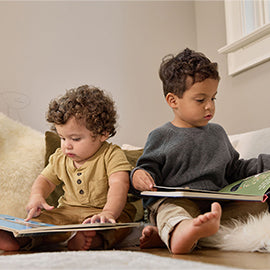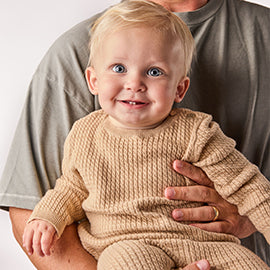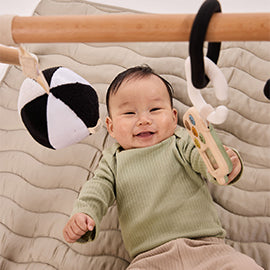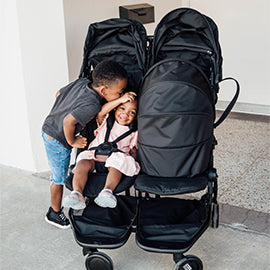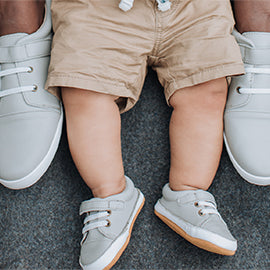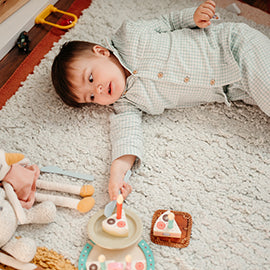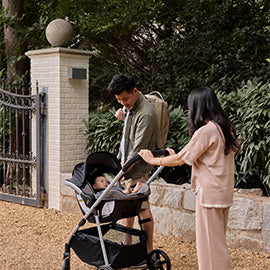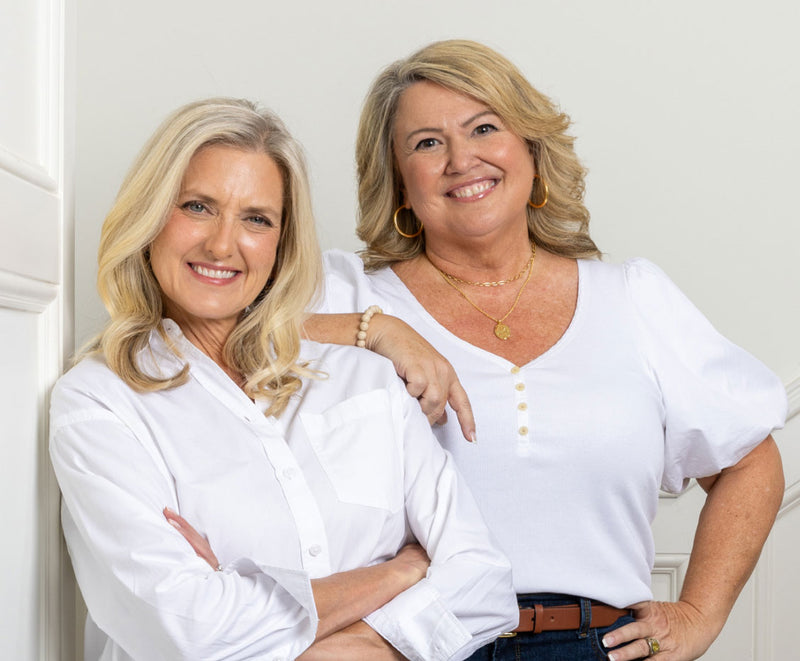Our youngest daughter, Poppy, started taking her first steps recently, and I was quickly reminded of the mixed emotions that come with this milestone! However, until they get lots and lots of practice and those steps become more confident, the frequent stumbling, falling, and access to new things around the house create a whole new list of things to worry about. So, what should you expect, and how can you prepare for your baby’s first steps? I brought some of my questions and things I wish I had known to two pediatric experts: Dr. Carolyn Zuiker, PT, DPT, Owner/Physical Therapist at Boost Babies in Austin, TX.
Watching your little one grow and learn is thrilling. My favorite part is seeing how proud they are of themselves for becoming mobile!
When do babies take their first steps?
Dr. Carolyn Zuiker: In general, 50% of baby's first steps happen between 11-13 months, and 90% of babies take those first steps by 15 months. We know from scientific evidence that practice is the most important part of walking development. If an 11-month-old baby is not pulling to stand, is unable to let go and stand independently, or is not able to take steps on the furniture or walk while holding hands, then that baby is not getting the practice needed to take independent steps by his first birthday.
At what age should I be concerned if they aren't walking yet?
Dr. Carolyn Zuiker: Pediatricians use 15-18 months as a motor milestone marker for walking. As a pediatric PT, I would like to state that the earlier we can identify and treat delays in movement, the more optimal our treatment results are. In other words, we know that if your baby is having a hard time pulling to stand by 12 months, is not bearing weight or pushing through her legs, or does not initiate steps with help, it is important to reach out to your local healthcare provider and not wait for the 18-month pediatrician visit. Most states have direct access to therapy, where you can reach out to a healthcare professional, like a pediatric PT, for a specific developmental evaluation. I also want to emphasize that movement development is on a continuum.
If your baby is not moving in and out of sitting by 9 months or your “parent gut” is sounding off earlier than typical walking skills emerge, reach out to your local healthcare professional. As I mentioned earlier, the sooner we address these delays in independent movement, the better the treatment results.
It seems like my baby is always falling down when walking! How much falling is too much falling?
Dr. Carolyn Zuiker: What goes up must come down. Falling is an important and significant part of walking development. After a fall, our brain gets used to or “habituates” to the movement. Therefore, the more that balance is challenged and the child is forced into falling, the greater the improvement in stability. In addition, falling allows the child to develop protective reactions by using his arms to stop the downward momentum and prevent potential bodily injury. Practice your child’s new walking skills on softer surfaces like carpet or a dense foam mat. This helps to create a safe space for falling skill development.
New walkers fall all the time as they figure out their balance.
After about 3 months of baby walking practice, we expect falls to decrease in familiar areas, like your house. With that said, toddlers fall for many reasons, including external factors like attention diversion or walking in unfamiliar spaces. If your child has been walking for 6 months and is unable to keep up with her peers. Whether on the playground or in the classroom, contact your local healthcare professional. Also, if your child is limping or complaining of pain, seek medical attention.
Should my baby wear shoes to walk around the house?
Dr. Carolyn Zuiker: There is a ton of research out there supporting the importance of barefoot walking. The foot plays a major role in balance, proprioception (where the body is in space), and postural support. Based on the early walking research, babies who walk barefoot walk faster with a smaller step width and experience fewer falls when compared to babies walking with shoes. In addition, during barefoot walking, the foot is not restricted in movement, and feedback from the environment is maximized. Therefore, our babies need lots of barefoot practice time for optimal baby walking development unless otherwise directed by a healthcare provider.
What developmental activities are best to help with walking?
Dr. Carolyn Zuiker: Babies must take close to 10,000 steps before walking independently, so start practicing! Here are just a few examples of ways to practice standing/walking skills:
- Kicking. In the early months, touch those feet, and have them touch different textures with their feet on a play mat. When holding a baby on your chest or shoulder, put your hand under his feet so he can practice pushing/extending his legs.
- Cruising. Stand the child facing the furniture, move the toys out of her reach, make her reach, and shift her weight to start stepping.
- Balance. Stand the child with her back to the furniture, have her play, reach and pick up toys, and shift her weight.
- Walking. Hold both hands, then hold just one hand and explore; Change your hand position to hold the child's hands down towards the shoulders or hips.
- More Walking. Use a push toy (AVOID walkers with sling seats), get them excited and interested in a plush toy, and let them explore! (Some kids prefer to use chairs, stools, and our boxes)
Remember, if you have concerns about how your baby is moving or developing, please contact your local healthcare provider or pediatric PT.
Always know how to perform CPR. Immediate and high-quality CPR saves lives. As parents, we need to know what to do until help arrives. We offer an Infant + Child CPR, Choking, and First Aid Online Course at Moms on Call. These are essential life-saving skills all caregivers need to know to respond quickly and confidently in an emergency.
A little knowledge goes a long way and can help to make this milestone a little less stressful so you can fully enjoy your new walker!
